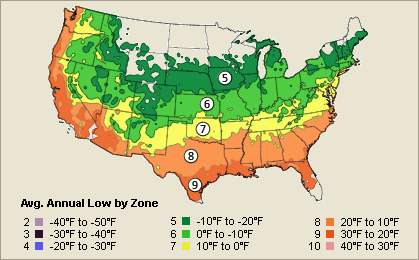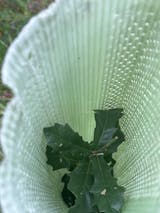To explain this unique hybrid oak, lets first go over the two trees that the comprise the Compton. Overcup is tolerant of poor drainage more so than any other oak (it grows in just about anything but standing water, and can handle annual dormant season flooding more than any other oak), but most game eat its acorns as a last resort. Overcup planted in landscapes can grow just about anywhere including hilltops. Live oaks are also extremely site tolerant, but prefer better drainage in moist sites than overcup. Live oak is extremely productive as far as mast is concerned, and deer (also other game) love its acorns. Humans love the evergreen foliage and wide spreading habit known only in the southern states.
Comptons take all the “good” traits of both parents and in some cases actually improve those traits. These traits include faster growth than both parents, a usually larger, tastier acorn than both parents (some trees have quarter sized acorns), and heavy production. Variation among trees is typical (some lean more toward live oak, some a perfect mix, some more like overcup). Variation is great because some may drop acorns on years when others don’t produce. This also makes each and every tree an “individual”.
|
Type:
Zone:
|
White Oak section
6 - 9
|
| Soil pH: |
4.5 - 6.5 |
| Mature Height: |
60' - 80' |
| Wildlife Value: |
Acorns important source of food for deer, wild turkey, northern bobwhite, black bear, ducks. |
| Site Preference: |
Thrives on many sites. Tolerant of poorer sites once established. Naturally occurs on low ground but doesn't tolerate long durations of flooding. |
| Nut Maturity Date: |
Mid-October to December |
| Alias: |
Compton Oak |

Live plants and seedlings: Orders without a specific ship date selected at check out are shipped via UPS the first shipping day following the day the order is received. In order to ensure our live plants and seedlings are delivered in the best shape we do not ship on Friday Saturday or Sunday. You may select a shipping date up to six weeks from purchase date at check out.
Pre-Ordered Live plants and seedlings: Pre Ordered live plants and seedlings will be shipped when the stock is up to standard beginning in October or Fall Pre Orders and March for Spring Pre Orders. Shipping for pre-orders is calculated on our standard shipping rates and is in addition to any in stock live plant or seedling charges on you order. All shipping is due at the time of purchase, notifications and tracking will be sent when the order ships.
Native Seed and Forb Blends : Native Seed and Forb blends are custom blended and shipped via UPS from Kentucky please allow three days from the day the order is received until shipment. We do not ship Native Seeds and Forb Blends on Saturday or Sunday.
No Refund Policy:
Mossy Oak Nativ Nurseries (Nativ Nurseries) guarantees that our product will arrive in good condition, alive, and true to its name as labeled. We take care in packaging our products. If your order is incorrect or does not arrive in good condition, contact our customer service desk within five (5) business days from your receipt of the product to report any mistake in your order or damage to the product. No refunds will be given however but, we will fix our mistake or rectify any damage by replacing the product at our expense. Nativ Nurseries makes no warranty, expressed or implied for any certain rate of growth or productivity for any of our plant products. Nativ Nurseries will not be responsible for crop failure, damage to products after the customer has received an order, or injuries due to non-recommended zone planting, frost damage, or any man made or natural cause beyond our control. Nativ Nurseries will consider replacing an order if a claim is made in writing or e-mail within five (5) business days from your receipt of the product explaining in detail what problems have occurred. However, Nativ Nurseries reserves the right to refuse replacement at any time.














